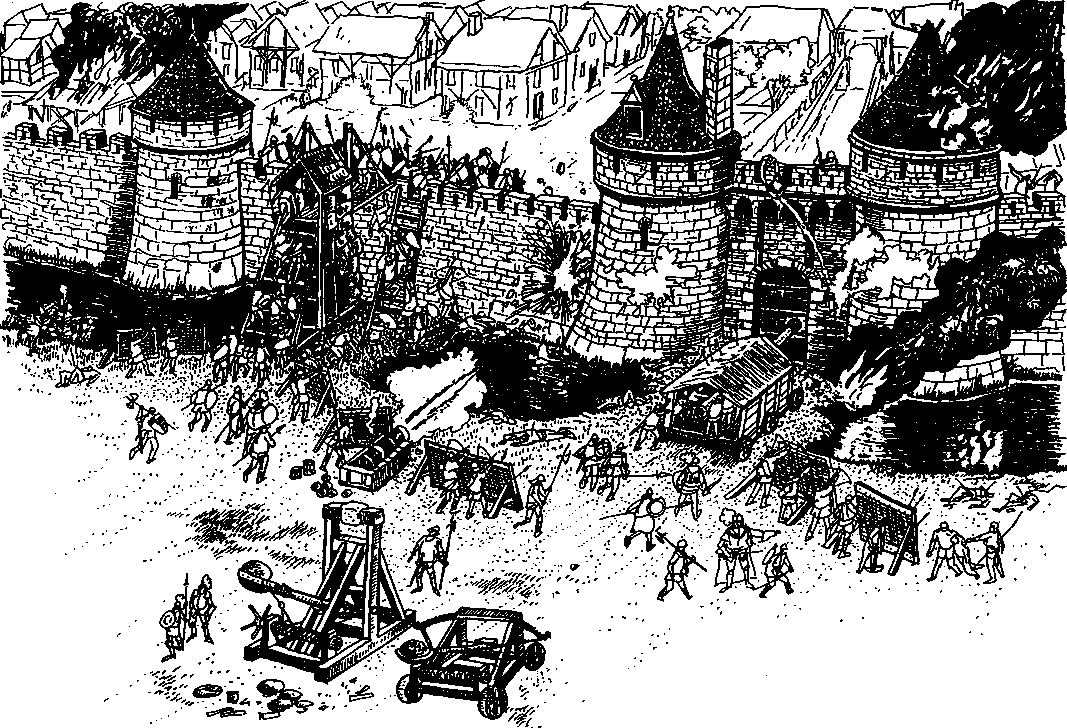Farce. How many battles and how many sieges have been decided as the result of iniquitous treachery? Certainly just as many as have been won through bravery.
If intimidation, menace, negotiation, ruse, treachery or surprise failed to bring an operation to a swift conclusion, besiegers were obliged to take the place by force. A military siege was a large-scale undertaking demanding time, comprehensive logistics and considerable organization. Soldiers, engineers and workers, ammunitions, machines, tools, accommodations, water and food supplies, all had to be arranged and accounted for. Weather conditions also played an important role; if it rained, camps and roads became mud pools, bows and hurling machines were useless, and morale collapsed. Even in good conditions, armies of the Middle Ages were slow to move, and they could be mobilized only for short periods; vassals were required to be available for the ost (military service) only forty days of the year. Vassals and peasant-soldiers mobilized by the suzerain became impatient, and many of them wanted to go home when harvest time came.
The first stage of the siege was the establishment of a tight blockade intended to isolate the place and cut all communication and supply lines. The intended result was a war of attrition; that is, the besiegers intended to wait until the besieged were worn out and exhausted by hunger, isolation, sickness and discouragement. It was consequently important for the encircled garrison to have reliable allies who could come to its rescue and provide sufficient supplies.
In the limited space offered by the castle and its bailey, peasants and non-combatants of the neighborhood found temporarily refuge. In return, they participated in defense or at least tried not to be a hindrance. In some cases, when supplies were gone and the garrison was still refusing to surrender, “useless mouths” (women, children and the elderly) were cast out of the castle.
Sometimes, however, the defenders had left the countryside surrounding the castle empty by “scorched earth” devastation. In such cases the besiegers were, in their turn, short of resources and supplies.
Since the attrition siege was based on logistics and time, the besiegers had to be accommodated in one or more temporary camps. It was of course desirable to protect the





 World History
World History









